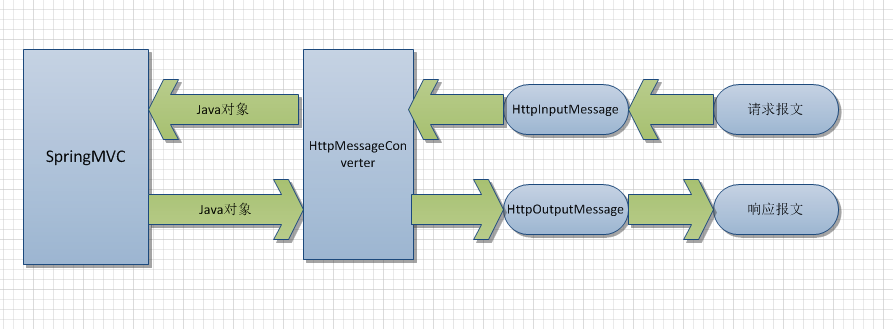springMvc注解之@ResponseBody和@RequestBody详解
发布于 2018-03-08 21:55:19 | 196 次阅读 | 评论: 0 | 来源: 网友投递
Spring Framework 开源j2ee框架
Spring是什么呢?首先它是一个开源的项目,而且目前非常活跃;它是一个基于IOC和AOP的构架多层j2ee系统的框架,但它不强迫你必须在每一层 中必须使用Spring,因为它模块化的很好,允许你根据自己的需要选择使用它的某一个模块;它实现了很优雅的MVC,对不同的数据访问技术提供了统一的接口,采用IOC使得可以很容易的实现bean的装配,提供了简洁的AOP并据此实现Transcation Managment,等等
本篇文章主要介绍了springMvc注解之@ResponseBody和@RequestBody详解,小编觉得挺不错的,现在分享给大家,也给大家做个参考。一起跟随小编过来看看吧
简介
springmvc对json的前后台传输做了很好封装,避免了重复编码的过程,下面来看看常用的@ResponseBody和@RequestBody注解
添加依赖
springmvc对json的处理依赖jackson
<dependency>
<groupId>org.codehaus.jackson</groupId>
<artifactId>jackson-core-asl</artifactId>
<version>1.9.11</version>
</dependency>
<dependency>
<groupId>org.codehaus.jackson</groupId>
<artifactId>jackson-mapper-asl</artifactId>
<version>1.9.11</version>
</dependency>xml配置
<mvc:annotation-driven />//不要忘了命名空间配置@ResponseBody
如果传输的是单层json对象,我们后台可以直接用 @RequestParam接收
$.ajax({
type : "post",
dataType : "json",
url : "/testRequestBody",
data:{
name:"韦德",
age:35
},
success : function(result) {
}
});
@RequestMapping("/testRequestBody")
public String testRequestBody(@RequestParam Map<String, Object> map) {
System.out.println(map);// {name=韦德, age=35}
return "index";
}如果传输的是多层嵌套json对象,这个时候会就会出现数据丢失问题
@ResponseBody很好的解决了这个问题,它会把前台传输过来的json转化为后台对应的对象
$.ajax({
type : "post",
dataType : "json",
url : "/testRequestBody",
contentType:"application/json",
data:JSON.stringify({
name:"韦德",
win:[2006,2012,2013],
age:35
}),
success : function(result) {
}
});
@RequestMapping("/testRequestBody")
public String testRequestBody(@RequestBody Map<String, Object> map) {
System.out.println(map);//{name=韦德, win=[2006, 2012, 2013], age=35}
return "index";
}
需要注意的是前台需要指定contentType为"application/json"
同时要把json对象转化为String,否则后台不能识别
@ResponseBody
ajax请求返回json格式,往常我们可以这样做
private void writeJson(HttpServletResponse response, Object object) {
String json = JSON.toJSONString(object);
response.setCharacterEncoding("UTF-8");
response.setContentType("application/json; charset=utf-8");
PrintWriter out = null;
try {
out = response.getWriter();
out.write(json);
} catch (IOException e) {
e.printStackTrace();
} finally {
if (out != null) {
out.close();
}
}
}
这个时候 @ResponseBody就派上用场了,只需要一个注解,全部搞定
$.ajax({
type : "post",
dataType : "json",
url : "/testResponseBody",
success : function(result) {
console.info(result);
}
});
@RequestMapping("/testResponseBody")
@ResponseBody
public Map<String, Object> testRequestBody() {
Map<String, Object> result = new HashMap<String, Object>();
result.put("name", "韦德");
result.put("age", 35);
return result;
}
前台console输出
{
"age": 35,
"name": "韦德"
}总结
在网上看到很不错的流程图,作为总结吧

以上就是本文的全部内容,希望对大家的学习有所帮助,也希望大家多多支持PHPERZ。